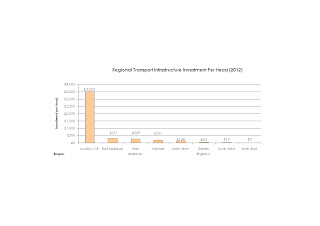Research and Policy institute Centre for Cities launched ‘Outlook 1901’ on the 12th July 2012, which aimed to analyse whether we could or indeed should look to the past to help rebalance regional economies.
This article highlights some of the main areas of discussion; speakers included Peter
Hall (UCL), Tristram Hunt MP (Stoke Central) and Tony Travers (LSE).
1901 marked a turning point for many of England Manchester , Birmingham and
Liverpool were challenging London for supremacy,
yet by the turn of the century London
History has demonstrated that there are 3 key components to a successful
city, they are: a skilled workforce; improved connectivity and a diverse economy. To help re-balance the picture and ensure that
regional centres become more attractive places for business and for residents,
we will consider each of these components in turn.
A Skilled Workforce
The
ability of a city to attract a skilled workforce is dependent upon its ability
to attract high paid and stable jobs.
The
presence of high paid jobs therefore leads to increased aspirations, more
opportunities and higher levels of disposable incomes.
Improving Connectivity
The
lack of comprehensive public transport networks within UK
 |
Source:
Urban rail.Net
|
According
to Sir Peter Hall, France currently have approximately 100 new tram lines under
construction. By comparison, the UK France
In the
"In the past
those in the regions will have seen the need for extra capacity on the
railways, need for a tramlines etc and acted on it, now they have to go to
Whitehall where the civil servants making the decisions to allocate funds do
not ‘see’ the need. They do however ‘see’ the need for extra capacity in
London because they will be using such networks every day, leading to funds
focused upon one place, where the civil servants live and work"
The investment

As the hub of this motorway network. Preston
has indeed prospered, enjoying access routes from all across the country .
Additionally, Peter Hall emphasized the importance of developing high speed rail sooner rather than later, noting that cities within 2 hours of
A Diverse Economy
It is important that a city does not become overly
reliant on a particular sector and is able to adapt quickly and attract new
industry.
American electronic and pharmaceutical companies.
 |
Source (ONS Census 2011, IPPRNORTH)
|
Conclusions
The capacity for local business and local political elites to make decisions has significantly reduced since the 19th C as power has transferred to
Centre
for Cities conclude that the government should sustain investment in skills and
in infrastructure. They should work with local authorities to identify targeted
investment opportunities and devolve major transport scheme funding to
functional economic areas.
Short
term cuts in expenditure on the key drives of economic success are ultimately
to result in a larger long term bills.
All
in all the debate was lively and interesting and could be a springboard for
future dialogue in revitalizing regional economies.
(Jo hn Ainsworth

No comments:
Post a Comment